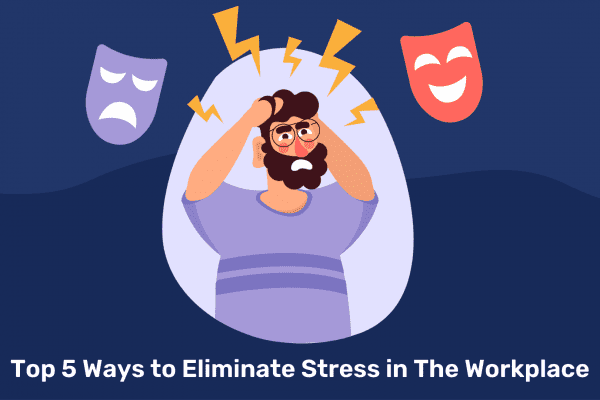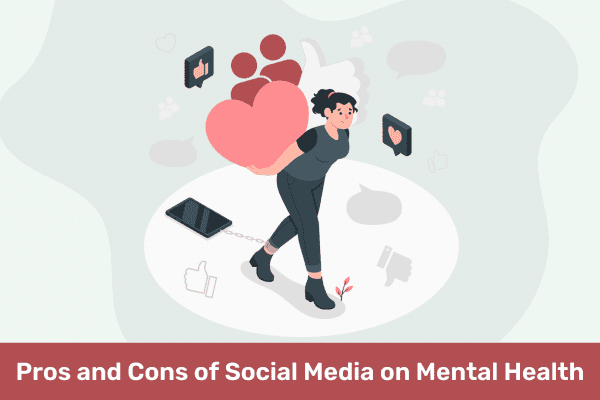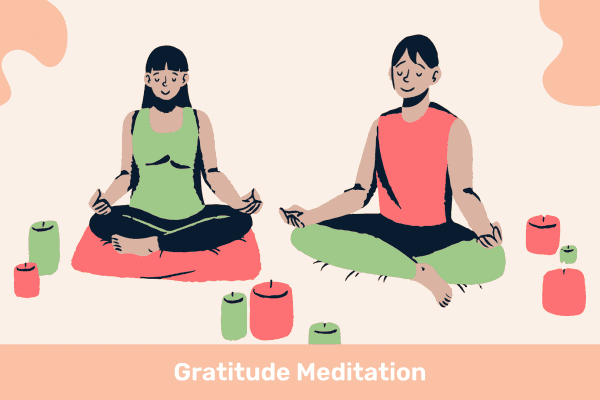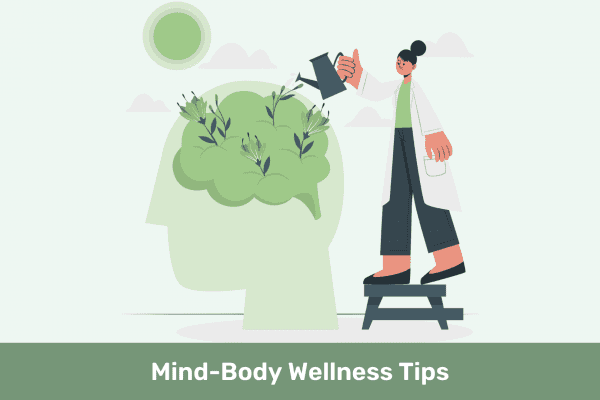Introduction
Welcome to “8 Mindful Monday Ideas to Transform Your Week.” As we embark on our weekly journey, the way we start our Mondays can set the tone for the days to come. Embracing mindfulness, the practice of being present and fully engaged in the moment, can be a game-changer for your overall well-being and productivity. This guide is designed to introduce you to a variety of mindful practices, each offering a unique way to bring focus, calm, and balance into your life from the very start of your week. Whether you’re looking to reduce stress, enhance focus, or simply find a moment of peace in your busy schedule, these eight ideas can help you cultivate a mindfulness routine that resonates with your personal needs and lifestyle. Let’s delve into these practices and discover how they can positively influence your week, one mindful step at a time.
Idea 1: Meditation Practice
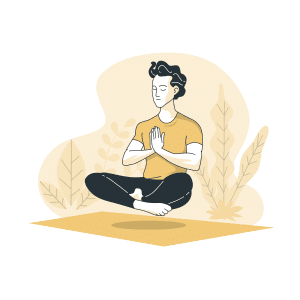
Embarking on our Mindful Monday journey, we begin with the profound practice of meditation. This ancient technique, now backed by modern psychology, offers remarkable benefits for both mind and body. The American Psychological Association highlights studies showing that mindfulness meditation not only changes our brain but also our biology, leading to enhanced mental and physical health.
Understanding Meditation’s Impact:
Meditation is more than just a moment of calm; it’s a transformative practice that can reshape our daily lives. Regular meditation can reduce stress, improve focus, enhance emotional well-being, and even lead to physical health benefits like lower blood pressure and improved immune response. These changes go beyond temporary relief, offering long-term improvements in how we process emotions, handle stress, and approach our daily lives.
Starting Your Meditation Practice:
-
-
- Choose Your Style: There are many forms of meditation, from guided meditations, which are great for beginners, to more independent practices like mindfulness or concentrative meditation.
- Create a Dedicated Space: Find a quiet, comfortable spot for your practice. It doesn’t have to be elaborate – a corner of a room with a cushion or chair can suffice.
- Set a Regular Time: Consistency is key. Whether it’s first thing in the morning or during a lunch break, find a time that works for you and stick to it.
- Begin with Short Sessions: Start with 5-10 minutes and gradually increase as you become more comfortable with the practice.
- Use Resources: Plenty of apps and online resources offer guided sessions to help you start and maintain your practice.
-
Deepening Your Meditation Experience:
As you grow more accustomed to meditating, explore different techniques to deepen your practice. Mindfulness meditation encourages you to observe thoughts and sensations without judgment, fostering a deep sense of presence. Concentrative meditation, like focusing on your breath or a mantra, can sharpen your focus and mental clarity.
Incorporating Mindfulness into Daily Life:
Beyond your dedicated meditation time, try to incorporate mindfulness into your daily activities. This could be practicing mindful eating, where you savor each bite, or mindful walking, where you fully experience each step and your surroundings.
Embracing meditation as part of your Mindful Monday sets a foundation for a week filled with clarity, peace, and mindfulness. This practice, rooted in ancient tradition and confirmed by modern science, is a key to unlocking a more mindful, healthful, and balanced life.
Idea 2: Mindful Eating

The second idea for your Mindful Monday is centered around the practice of Mindful Eating. This approach transforms the act of eating from a routine task into a mindful experience, enhancing your relationship with food while nourishing both your body and mind.
Understanding Mindful Eating:
Mindful eating is about fully engaging in the experience of eating, paying attention to the tastes, textures, and sensations of your food. It’s a practice that encourages you to slow down, savor each bite, and truly listen to your body’s hunger and fullness cues. This mindful approach can help reduce overeating, improve digestion, and even enhance your appreciation for the food you consume.
Getting Started with Mindful Eating:
-
-
- Eat without Distractions: Turn off the TV and put away your phone. Eating without distractions allows you to fully focus on your meal.
- Engage All Your Senses: Notice the colors, textures, smells, and flavors of your food. Appreciating these aspects can enhance your eating experience.
- Chew Slowly: Take the time to chew your food thoroughly, which aids in digestion and allows you to really taste your food.
- Listen to Your Body: Pay attention to your hunger and fullness signals. Eat when you’re hungry and stop when you’re comfortably full, not stuffed.
- Reflect on Your Food’s Journey: Consider where your food came from and the effort taken to prepare it. This can foster gratitude and a deeper connection to your meals.
-
Deepening Your Practice:
As you become more comfortable with mindful eating, try to incorporate it into more meals throughout your week. You can also explore further by trying new foods and observing your reactions to them, both physically and emotionally.
Mindful Eating and Health:
Adopting a mindful approach to eating can lead to healthier food choices, better portion control, and a more harmonious relationship with food. It’s not about restricting yourself, but rather about understanding and responding to your body’s needs.
Incorporating Mindful Eating into your Mindful Monday can be a transformative step towards better health and well-being. It invites you to create a more thoughtful and appreciative relationship with your meals, turning everyday eating into a mindful, enjoyable experience.
Read Further: How to stop mindless eating?
Idea 3: Gratitude Journaling
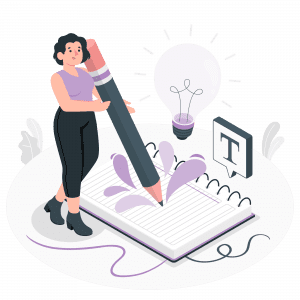
The third concept for your Mindful Monday revolves around the enriching practice of gratitude journaling. This simple yet powerful activity involves taking time to reflect and write down things for which you are thankful. It’s about recognizing and appreciating the positives in your life, big or small.
The Power of Gratitude:
Gratitude journaling is more than listing the good things in life; it’s a practice that can shift your mindset, enhance your mood, and even impact your overall well-being. By focusing on gratitude, you train your mind to identify and appreciate the positives, which can significantly reduce stress and increase happiness.
How to Start a Gratitude Journal:
-
-
- Choose Your Medium: Whether it’s a physical notebook or a digital app, choose a journaling medium that feels comfortable and accessible to you.
- Set Aside Regular Time: Dedicate a few minutes each Monday to write in your gratitude journal. Mornings can be an ideal time to set a positive tone for the day.
- Be Specific: Instead of generic statements, try to be specific about what you’re grateful for. Detailed entries can provide deeper insights into what truly brings you joy and contentment.
- Reflect on the Why: When writing about what you’re grateful for, delve into why it makes you feel thankful. This deepens the practice and enhances its benefits.
- Include the Challenges: Sometimes, it’s helpful to write about challenges and what they teach you or how they help you grow. This can foster a sense of gratitude even in difficult times.
-
Benefits of Gratitude Journaling:
Regular gratitude journaling can lead to increased optimism, better sleep, and even improvements in physical health. It’s a practice that encourages you to look beyond the immediate hurdles and find joy and meaning in what you already have.
Making It a Habit:
Like any practice, the key to reaping the benefits of gratitude journaling is consistency. Over time, this ritual can become a cherished part of your Mindful Monday, helping you start your week on a positive, grateful note.
By incorporating gratitude journaling into your routine, you’re not just recording happy moments; you’re actively cultivating a mindset of appreciation and positivity that can transform your perspective on life.
Idea 4: Nature Walks

The fourth idea for your Mindful Monday is to take nature walks. This activity involves stepping outside and immersing yourself in the natural environment, whether it’s a park, a forest, a beach, or even your neighborhood. Walking in nature is not just a physical exercise; it’s a way to connect with the world around you and find tranquility.
Embracing the Great Outdoors:
Nature offers a unique setting that can help reduce stress, improve mood, and increase feelings of well-being. The sights, sounds, and smells of the outdoors have a naturally calming effect, helping to clear your mind and bring a sense of peace.
Getting Started with Nature Walks:
-
-
- Find Your Space: Look for green spaces in your area, like local parks, trails, or nature reserves.
- Go at Your Pace: Whether you prefer a leisurely stroll or a brisk walk, do what feels comfortable and enjoyable for you.
- Be Present: Try to leave your phone and other distractions behind. Focus on the moment, observing the environment around you.
- Engage Your Senses: Pay attention to the different sensory experiences – the sound of leaves rustling, the sight of wildlife, the feel of the breeze.
- Make It a Routine: Regular nature walks can become a cherished part of your weekly routine, offering consistent benefits.
-
Benefits of Walking in Nature:
Research has shown that spending time in nature can lower blood pressure, reduce the risk of certain chronic diseases, and even improve cognitive function. It’s a simple yet effective way to take care of both your physical and mental health.
Incorporating Mindfulness:
To enhance the experience, try incorporating mindfulness into your walks. This can involve mindful breathing, walking meditation, or simply being aware of each step you take and the sensations you experience.
Incorporating nature walks into your Mindful Monday is a beautiful way to connect with the environment, promote physical health, and find mental clarity. It’s a practice that reminds us of the simple joys of life and the restorative power of nature.
Idea 5: Digital Detox

The fifth idea for your Mindful Monday is to practice a Digital Detox. This concept involves consciously stepping away from electronic devices and digital screens for a certain period, allowing you to disconnect from the online world and reconnect with yourself and your immediate surroundings.
Understanding the Need for a Digital Detox:
In our digitally saturated world, constant connectivity can lead to information overload, stress, and a feeling of being perpetually ‘switched on.’ A digital detox provides a much-needed break from this, helping to reduce anxiety and improve your mental clarity and focus.
How to Implement a Digital Detox:
-
-
- Set a Time Frame: Decide how long your digital detox will last. It could be just for the morning, the entire day, or even a specific hour that you usually spend on devices.
- Prepare in Advance: If needed, inform friends, family, or colleagues that you’ll be offline. This helps manage expectations and reduces the anxiety of missing out.
- Turn Off Notifications: Silence notifications or set your devices to ‘Do Not Disturb’ mode to avoid temptation.
- Engage in Offline Activities: Plan activities that don’t involve screens, like reading a book, engaging in a hobby, or spending time outdoors.
- Reflect on Your Experience: After the detox, think about how you felt during this time. Did you notice any changes in your stress levels, mood, or overall well-being?
-
Benefits of a Digital Detox:
A break from digital devices can lead to better sleep, more meaningful interactions with others, increased productivity, and a greater sense of presence and mindfulness in your daily life.
Making It a Regular Practice:
Consider making a digital detox a regular part of your routine, not just on Mondays but at other times when you feel overwhelmed by digital connectivity. It’s a simple yet effective way to create balance in the digital age.
Digital Detox as part of your Mindful Monday can be a powerful tool in resetting your relationship with technology. It allows you to step back, gain perspective, and focus on what truly matters in your life.
Idea 6: Yoga or Stretching
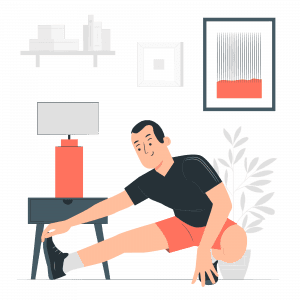
For the sixth idea in your Mindful Monday series, let’s focus on the practice of yoga or stretching. This activity isn’t just about enhancing physical flexibility or strength; it’s a holistic approach to harmonizing the body and mind, encouraging a state of relaxation and mindfulness.
The Benefits of Yoga and Stretching:
Yoga combines physical postures, controlled breathing, and meditation, offering a complete mind-body workout. Regular practice can reduce stress, improve balance and flexibility, enhance strength, and promote mental clarity. Stretching, on the other hand, helps release muscle tension, improves posture, and can be a great way to unwind after long periods of sitting or standing.
Starting Your Practice:
-
-
- Choose Your Style: There are various yoga styles to explore, from gentle Hatha yoga, perfect for beginners, to more dynamic Vinyasa or Ashtanga. For stretching, you might focus on basic stretches or explore flexibility-enhancing routines.
- Create a Comfortable Space: Find a quiet area where you can practice without interruption. A yoga mat and comfortable clothing can enhance your experience.
- Incorporate Mindful Breathing: Whether practicing yoga or stretching, pay attention to your breath. Let your breath guide your movement, helping to create a meditative and introspective state.
- Listen to Your Body: Always respect your body’s limits. Yoga and stretching should never cause pain. It’s about finding balance and comfort in each pose or stretch.
-
Making It Accessible:
If attending a yoga class isn’t feasible, there are plenty of online resources, apps, and videos to guide you through sequences at home. The key is to make it accessible and enjoyable for yourself.
Yoga and Stretching as Mindful Practices:
Both yoga and stretching can be powerful mindful practices. They encourage you to be present in the moment, focusing on how each movement feels in your body. This awareness brings a sense of calm and centeredness that can benefit your entire day.
Incorporating yoga or stretching into your Mindful Monday routine offers a perfect blend of physical activity and mental relaxation, setting a peaceful and balanced tone for the week ahead.
Also Read: 21-Day Yoga Challenge
Idea 7: Reading for Relaxation and Growth

The seventh idea for your Mindful Monday focuses on the enriching activity of reading. Whether it’s diving into a gripping novel, exploring a thought-provoking non-fiction book, or losing yourself in a collection of poetry, reading is a wonderful way to relax, escape, and grow.
Benefits of Reading:
Reading offers numerous benefits beyond simple enjoyment. It can reduce stress, improve brain function, increase empathy, and even help with sleep. Engaging with a book allows you to step away from the hustle of daily life, providing a mental break and a chance for quiet reflection or exciting escapades in your imagination.
How to Incorporate Reading into Your Routine:
-
-
- Choose Material That Resonates with You: The key to enjoying reading is selecting books or materials that genuinely interest you. Whether it’s a genre you love or a topic you’re curious about, choose something that excites you.
- Set a Dedicated Time for Reading: Carve out a specific time during your Mondays solely for reading. It could be during your morning coffee, on your lunch break, or as a way to wind down before bed.
- Create a Comfortable Reading Space: Establish a cozy spot for your reading time. Good lighting, a comfortable chair or pillow, and maybe a warm cup of tea can make your reading experience more enjoyable.
- Join a Book Club or Reading Group: To add a social element to your reading, consider joining a book club. It can be a great way to share perspectives and discover new books.
-
Reading as a Mindful Activity:
Approach reading as a mindful exercise. Pay attention to the words, the rhythm of the narrative, and how the story or text makes you feel. Allow yourself to be fully immersed in the experience.
Combining Learning with Leisure:
Reading can be both an educational journey and a leisure activity. Non-fiction books offer a chance to learn about new subjects or gain different perspectives on familiar topics. Fiction books can be an entertaining escape that also stimulates your imagination and creativity.
Incorporating a habit of reading into your Mindful Monday provides a perfect balance between relaxation and personal growth. It’s an activity that can quiet the mind, stir the imagination, and leave you feeling refreshed for the week ahead.
Idea 8: Creative Expression

The eighth and final idea for your Mindful Monday is to engage in creative expression. This involves indulging in any form of creative activity that allows you to express yourself, whether it’s painting, writing, crafting, playing music, or even cooking. Creative expression is a wonderful outlet for emotions and a powerful way to explore your imagination and inner world.
Exploring the Benefits of Creativity:
Engaging in creative activities has been shown to reduce stress and anxiety, improve mood, and enhance cognitive function. It provides a productive way to process emotions, foster a sense of achievement, and can even lead to a state of flow, where you lose track of time as you’re fully immersed in the activity.
How to Get Started:
-
-
- Choose Your Medium: Pick an activity or medium that appeals to you. Don’t worry about skill level; it’s about the process, not perfection.
- Set Aside Dedicated Time: Just like with any other practice, setting aside time for your creative pursuits can help turn them into a habit.
- Create a Creative Space: Designate a space in your home where you can engage in your creative activities without interruptions.
- Experiment and Explore: Don’t be afraid to try new things or mix different mediums. Creativity is about exploration and play.
-
Incorporating Mindfulness into Creativity:
While engaging in your creative activity, practice mindfulness by focusing on the present moment. Notice the colors you’re using, the texture of the materials, and how the activity makes you feel.
Documenting Your Creative Journey:
Consider keeping a journal or portfolio of your creative work. Reflect on your progress, the emotions you felt during the process, and any ideas or inspiration that emerged.
Sharing Your Work:
If you’re comfortable, share your creations with a broader audience through social media or local community groups. Sharing can be a way to connect with others and celebrate your expression.
Creative expression is a deeply fulfilling way to conclude your Mindful Monday. It allows you to tap into your inner resources, provides a sense of freedom, and can transform the way you view yourself and the world. Whether you’re an experienced artist or a beginner, embracing creativity can be an enlightening part of your personal mindfulness journey.
Conclusion
As we conclude the “8 Mindful Monday Ideas to Transform Your Week,” it’s important to reflect on our journey. Each of these mindful practices offers unique benefits, contributing to a more balanced, serene, and fulfilled life. From the tranquility of yoga to the liberation of artistic expression, these rituals are more than just activities; they are stepping stones to an enriching lifestyle.
Mindful Mondays are about setting the tone for the week ahead. Ideally, you want to embark on your days with a sense of calm and positivity. Whether you choose to engage in one or all of these activities, the key is to be present and to embrace each experience with an open mind.
Remember, the journey towards mindfulness is personal and ongoing. It’s about finding what resonates with you and integrating these practices into your life in a way that feels natural and beneficial. As you continue to explore and grow in your mindfulness journey, remember that support and guidance are always available.
This is where Woliba comes in as your supportive ally in fostering a culture of wellness and mindfulness. Our platform is designed to seamlessly integrate these Mindful Monday practices into your routine. We offer tools and resources that encourage and track your progress. With Woliba, you can transform these individual practices into a cohesive, enriching part of your life and work culture, ensuring you and your team remain balanced, focused, and rejuvenated throughout your week and beyond. Let Woliba be the partner that supports you in making every Monday, and indeed every day, a mindful, positive experience. Contact us today!

